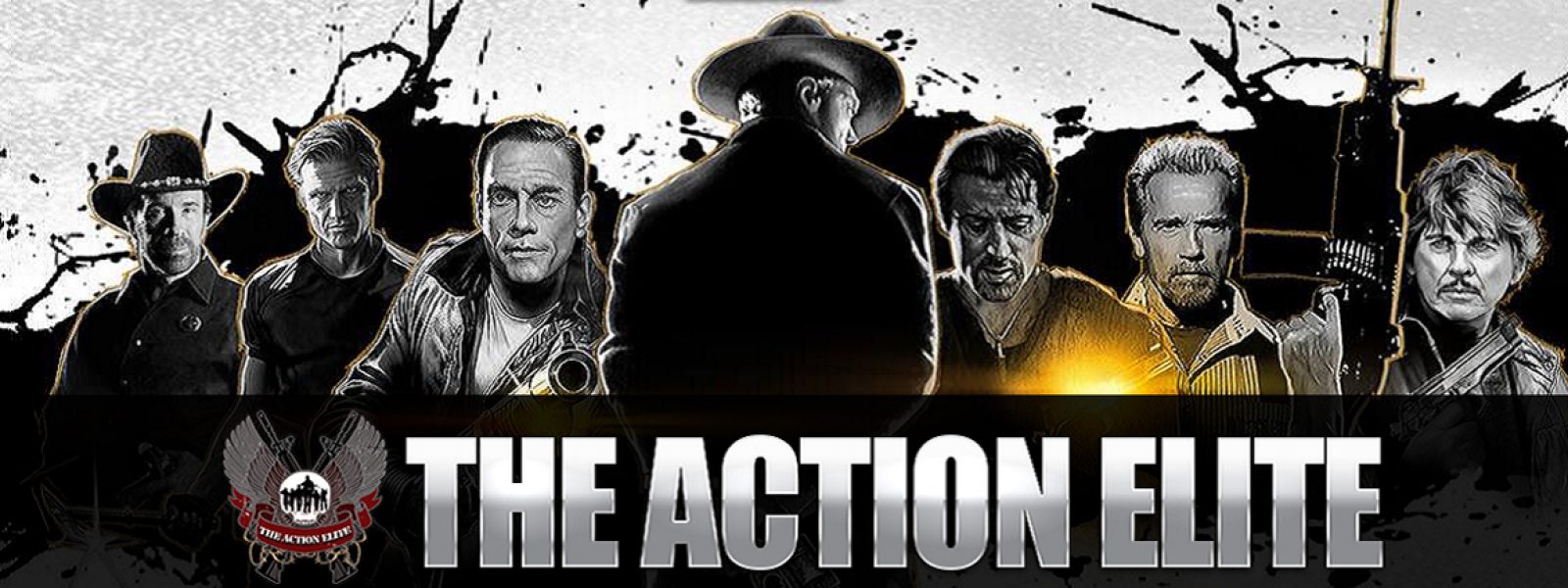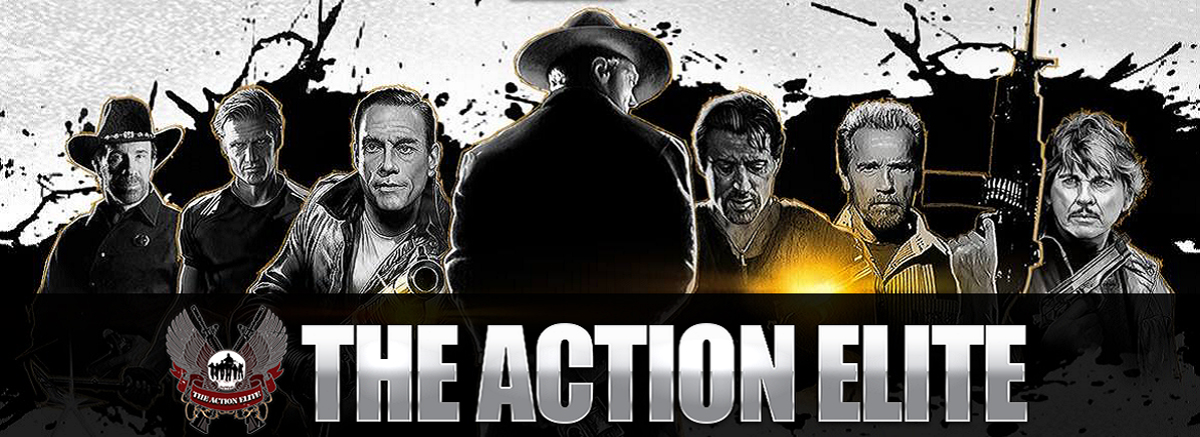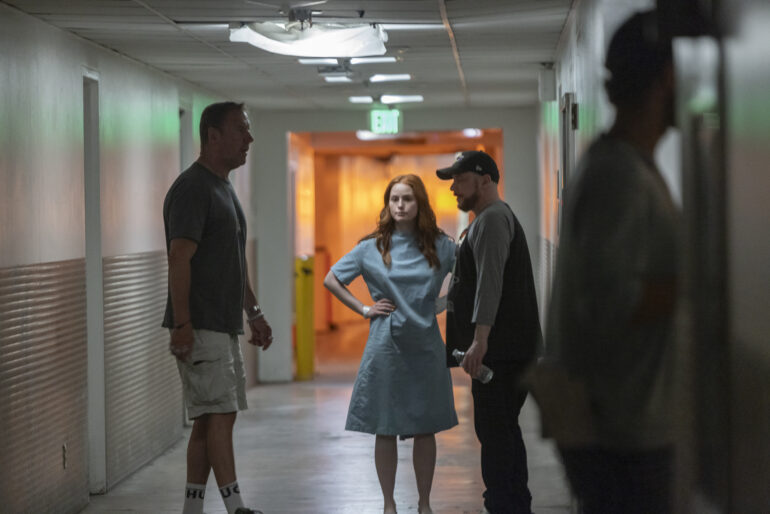Since his first breakout film Born American (1986), Finnish filmmaker Renny Harlin has amassed an outstanding and world-renown filmography, everything from the horror smash hit A Nightmare on Elm Street 4: Dream Master (1988) to modern-era action classics such as Die Hard 2 (1990) and Cliffhanger (1993). Harlin has continued tirelessly to keep sharp in the horror and action genres, while his latest shot-back-to-back trilogy The Strangers, with the second of which is out this September. Rebooting the IP in a big, ambitious way, Harlin’s new trilogy is seen more as a single film with three chapters, and here he discusses his work on the whole, as well as diving deep into the chilling world of The Strangers.
I think of you as a filmmaker who’s equally proficient with action and horror. I’ve been a fan of yours going way, way back since your Born American days. I love that movie.
Oh my God!
You have roots in horror that go back to Prison and A Nightmare on Elm Street 4. I could keep naming them: The Covenant, Mindhunters, Exorcist: The Beginning, Devil’s Pass, and I actually saw your film Refuge last year in a theater, which was pretty solid. Say something about crafting horror versus crafting action. What is it about horror that really gets to you and makes you want to sink your teeth into it?
I was channeled into the horror genre by my mother when I was very little. I think I saw Rosemary’s Baby when I was maybe six or eight years old with my mother in a movie theater. She was a big Hitchcock fan, so I saw all the Hitchcock movies with her. She just loved thrillers and horror films. That’s where I got my fascination, was with mother’s milk. I always loved it because it’s a very visual genre. I always kind of compare horror and comedy because they are flipsides of the same coin. If you’re telling a joke in a movie or telling a joke in general, it’s all about building it up and setting expectations and there has to be a payoff that has to be a surprise or something clever that gets you the reaction of laughter. Horror, it’s setting up a situation, whether it’s a lonely woman in a hotel room and then when things start happening and suspense starts happening, something unexpected happens from an unexpected direction … well, maybe it’s expected like telling a joke and expecting a punch line. You know something scary is going to happen, so maybe it’s a little bit different than what you thought it would be. I just find it really fascinating and I find it to be a great and exciting challenge and just being able to tell it with a camera. Dialogue is great, but when you can do something visually where you don’t even need words, but it’s just about revealing something within the space of the camera or doing it with editing or doing it with a oner or however it’s done, but doing it within the situation, I just think of everything visually. I’ve had nightmares all my life. That’s, by the way, how I did A Nightmare on Elm Street – it’s all from my nightmares. So I’ve always had nightmares, and it’s due in no small part to my mom taking me to see all those movies. I see my nightmares like movies. If I read a good horror script, I see it as a movie, I see in angles and shots, and I decide that very carefully with a shot list and planning it. I was a horror comic book fan when I was younger. I see this like reading a comic book. Every frame tells a visual story. What’s the difference to action movies? It’s not that different. In action, you have the same sort of thing with buildup and payoff. Every action sequence has its own arc. But there’s more spectacle with action. Horror is about the tension.
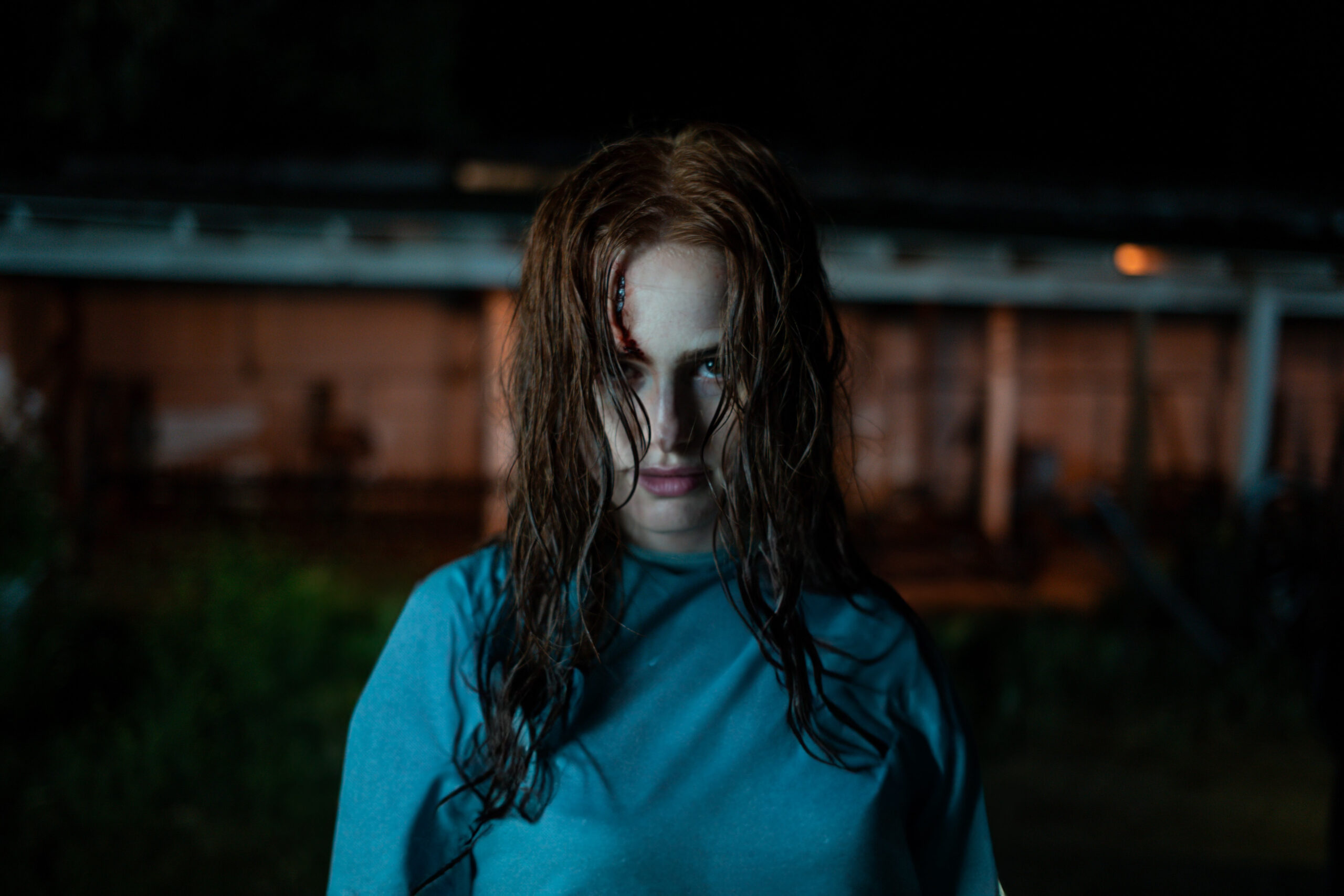
I’ve always wanted to define your work on the whole. Especially during your 90s period. I’m trying to put my finger on the Finnish, Renny Harlin touch. Your formula, because you definitely have one. When I see some of your films – especially the earlier ones on up through the 90s, I can see your imprint on those movies. It has to be partly because you’re from Finland, you’re from a different part of the world and you make movies differently than anyone else. It’s clear as day. What is “the Renny Harlin Finnish Touch?” What is that? I’ve always wanted to define it.
Wow. That is such a good question. I wish that I had the Hallelujah realization of what that is. I come from a country … I grew up where practically nine months of the year it’s very dark. I remember, as a kid, you go to school in the morning and it’s complete darkness. You go home in the afternoon and it’s complete darkness. You never see light. Ever. Five o’clock in the afternoon it feels like it’s midnight, and you feel like you have to go to sleep. As a contrast to that, in the summer the sun never goes down. So it’s light all the time. At midnight, you feel like you should go out or go have dinner or go play, but your mom says, no because it’s midnight, but you still think it’s two o’clock in the afternoon. So, you have this weird time clock. It can be really depressing sometimes. It’s a weight on your shoulders and you learn to live with it. Somehow, it gives you a little bit different of a worldview, I think. That whole thinking that there’re things that lurk in that darkness. It seeps into your imagination. I think that made me a very visual person. Like I said about my nightmares: I just feel like it’s very easy for me to read something and visualize it. Automatically. It’s already a movie in my head. I think that my thing is I always like to pay attention to details, I like to use a lot of close-ups and inserts to tell the story, and I just try to always … I actually learned a thing in Finland when I went to film school there. I thought I had made a masterpiece, this three-minute short film.
The professor told me that I was an idiot and that I had done everything wrong. It was a situation where I had the character get something from the refrigerator and I went to great lengths to get this refrigerator where I could remove the back of it and put the camera inside of the refrigerator so that when he opened it, he was looking, more or less, right into the camera, he reaches for something and pulls it out and shuts the door. I thought it was a genius angle. The professor told me that there was everything wrong with this shot because the camera can never be where the human eye cannot naturally be. That’s the first rule of filmmaking. I was all beat up and thought Oh, shit, how can I be this stupid? Then I went home and thought about it some more and thought, This film school sucks.
I quit film school. I was a year and half into it, and I quit. I can always thank that film professor for giving me the courage to go it alone. That place was going to kill my creativity. Ever since, even before, but ever since, I’ve always looked for the interesting place to put the camera. Break the rules. The camera doesn’t have to be where the human eye has to be at all. It can be anywhere. Always try to think of the most interesting place to put the camera. An action scene, or a horror film scene. Where to place it so that it gets the maximum impact visually. That’s what I would say.
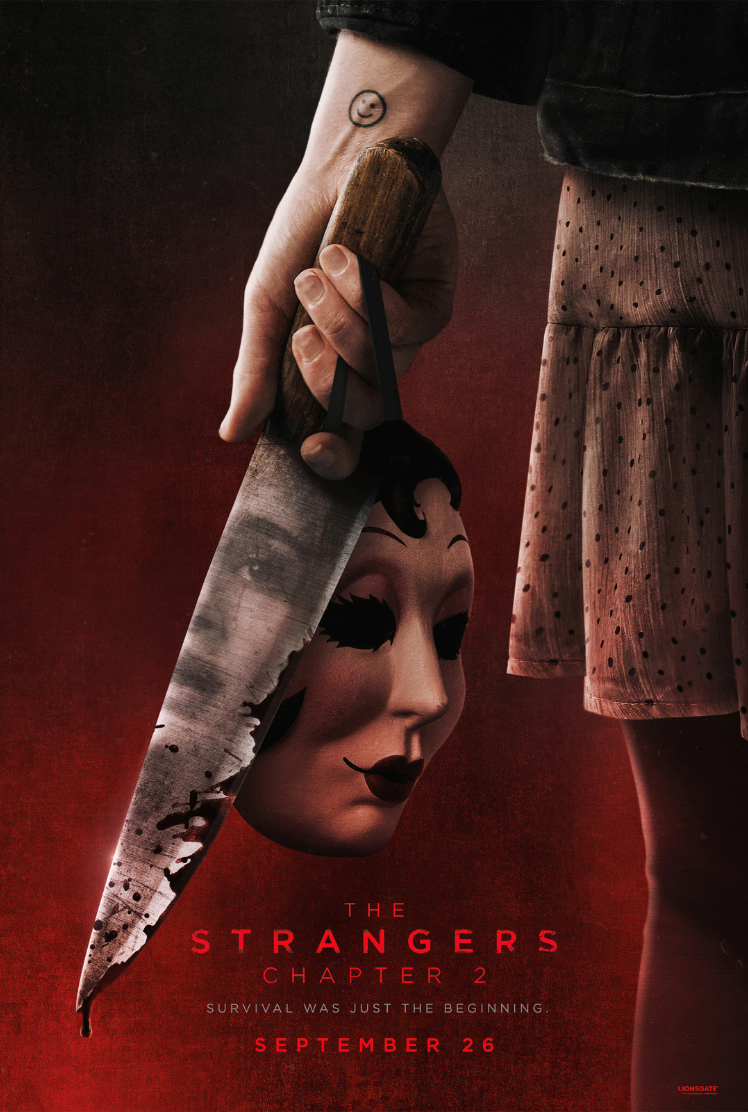
How do you make The Strangers, which was an established IP, how do you make that fresh and give it the Renny Harlin “Finnish Touch?” How do you bring something new and fresh to this series?
I definitely wouldn’t have touched it if was just a remake of The Strangers. The original movie was so good. I’m putting the sequel to the original movie in kind of its own world. That was a conventional sequel to a movie. You put The Strangers and put them in a different place. I was fascinated by this idea of doing a four-and-a-half hour movie, a 270-page script and being able to explore these characters much deeper. I love the original film, and the burden of this three-movie trilogy was that the first movie had to set up the scenario, so it had that task. If we could just get the audience on board right away … we didn’t want them asking, What the hell? Why are we are we watching this remake? But that they would be patient to follow us to the second one, then we would have the freedom to open up the canvas and explore something different, let alone for the third one which goes in a completely upside down and inside-out direction, it goes completely crazy. It’s so dark. To be able to explore this central character and to be able to explore The Strangers without breaking the magic of them being random killers, but giving them little glimpses of who they are and what their background is. All that was super fascinating to me.
Again, coming from my mother, I’ve always been a huge fan of strong female characters. As you know, from A Nightmare on Elm Street or my movies The Long Kiss Goodnight, or movies that I’ve produced like Rambling Rose, I’ve always been into strong female characters. Here I was able to do a four-and-a-half hour journey that in the movie time takes place for four days. It’s a relentless survival story of this woman and for me it had … the first movie is a home invasion and has a claustrophobic feeling that takes place in the house. It’s kind of faithful to the original, but then we get the hell out of there and to me, the second movie was like Rambo: First Blood and she’s now out in the wilderness. The chase is on and it’s a survival movie. That’s appealed to all my senses, being in this cinematic environment.
It’s being outdoors and being bale to bring action elements and be honest with that, having these landscapes and visuals. Hey, you mentioned Born American. In that movie, there are some beautiful stunts in it, and they’re all about being in nature. That’s always been part of me. That’s maybe the “Renny Touch.” Finland is a big country. It’s bigger than Germany or England or many other countries, but has only five million people, so there’s a lot of nature. There’re a hundred thousand lakes, a hundred thousand islands, and endless forests, and small mountains. It’s very much the environment that I grew up in. It’s nature. The wilderness. Again, if you think about it, movies that I did like Cliffhanger, for example, I love that kind of a big, natural environment. I love shooting outdoors in natural situations. I hate shooting in a studio. I love going into the harsh reality of environments. Now that you’ve got me going, maybe that’s part of my secret sauce. And then, in this case, when you go into the third movie, all bets are off. We really get to go pedal to the metal. I promise that it’s nothing that you’ve seen before in terms of the character development and how topsy-turvy we turn this concept. Being a killer, being a victim, it’s a great exploration.


